Robotically fabricated pavilion by University of Stuttgart students is based on sea-urchin shells
Researchers and students from the University of Stuttgart employed robots to mould and stitch together this laminated plywood pavilion, which is based on the anatomy of a sea urchin (+ movie).
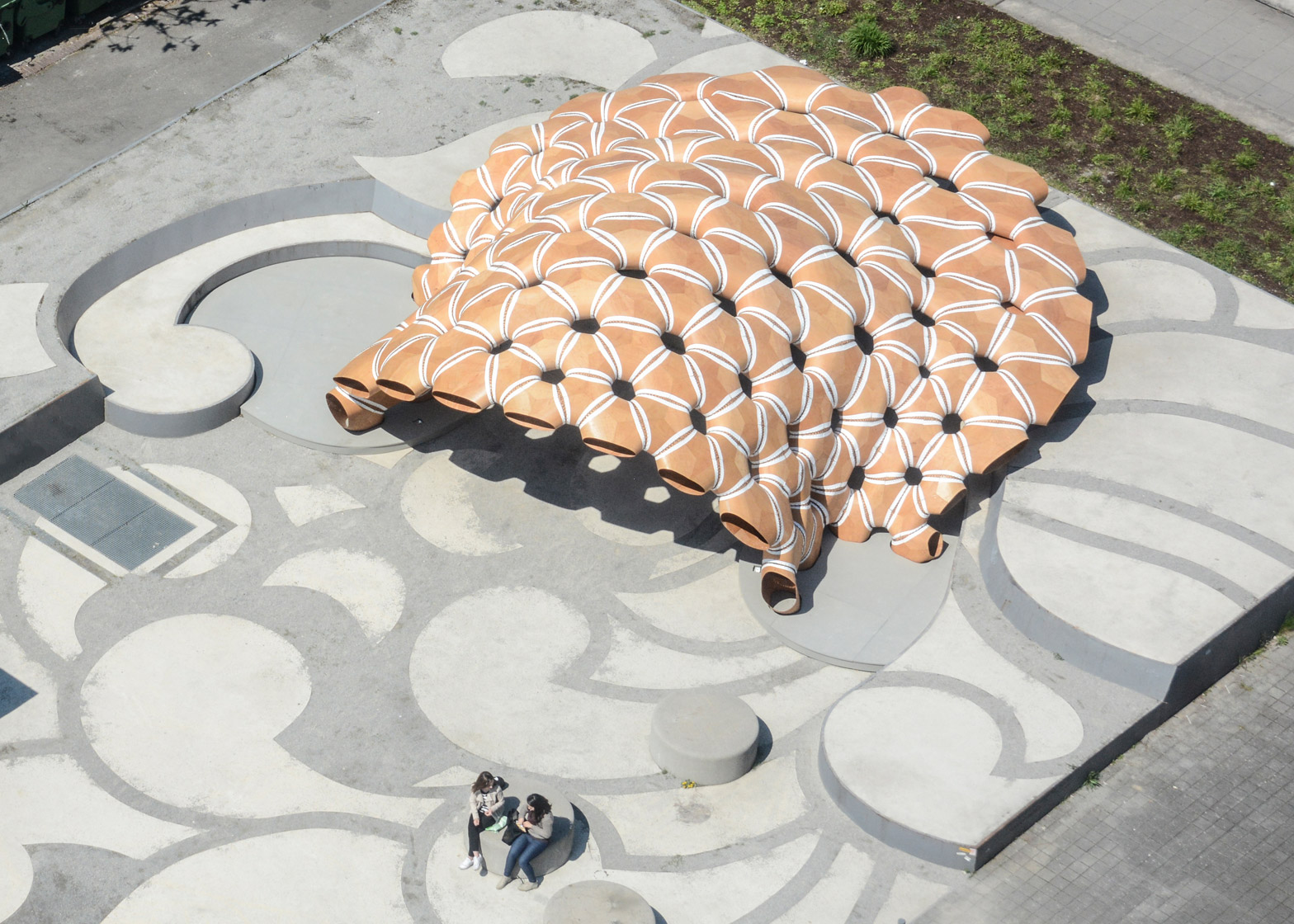
Made up of stitched plywood elements, the arched structure is the latest in an annual pavilion series produced under the leadership of Achim Menges, who heads up the school's Institute for Computational Design (ICD), and Jan Knippers from the Institute of Building Structures and Structural Design (ITKE).
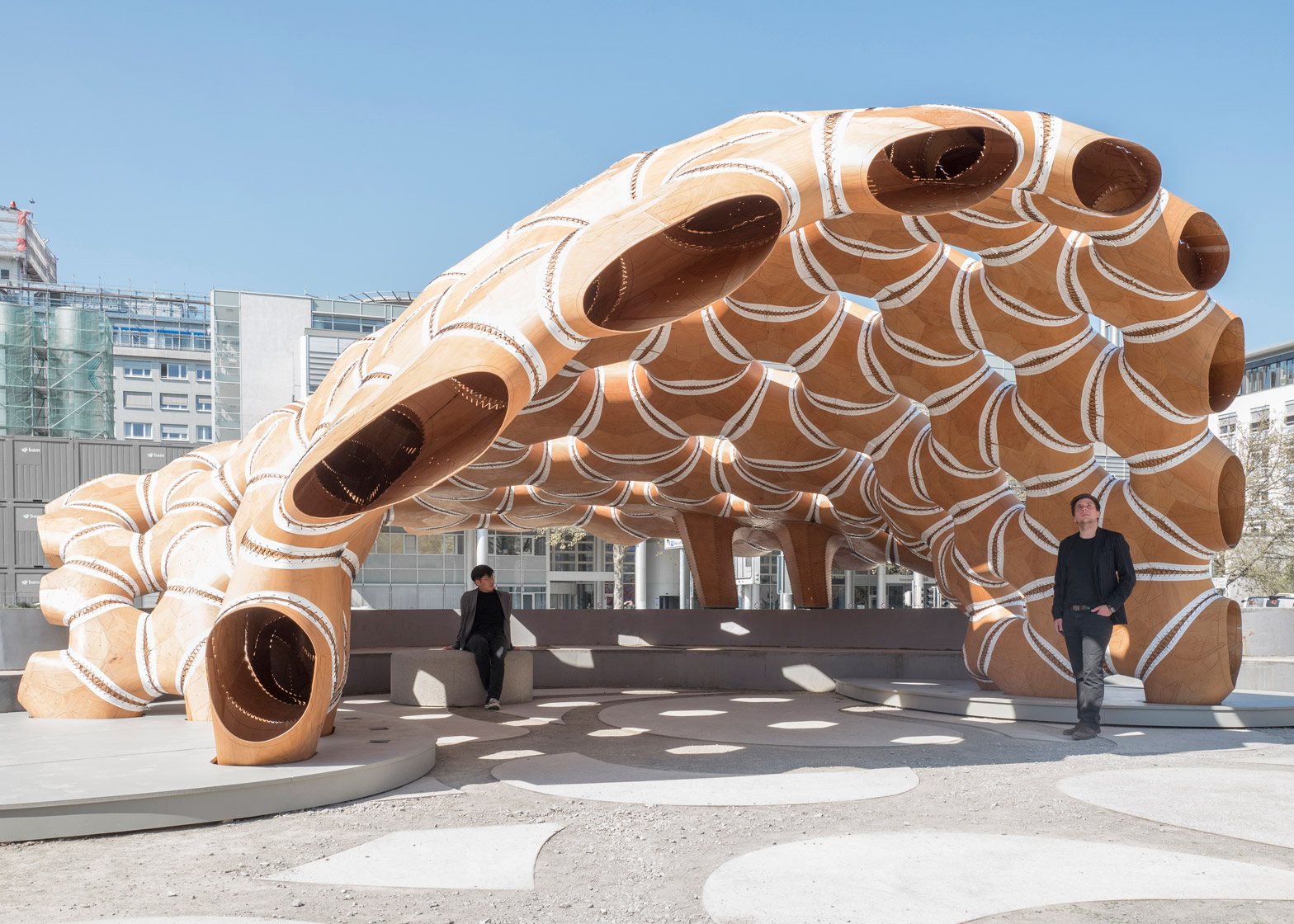
The pavilions are all intended to show the potential of computational design, simulation and fabrication processes in architecture.
This year's edition has a segmented shell made up of hollow, moulded beech plywood components that are laminated and held together by industrial stitching – processes that have all been carried out by a robot.
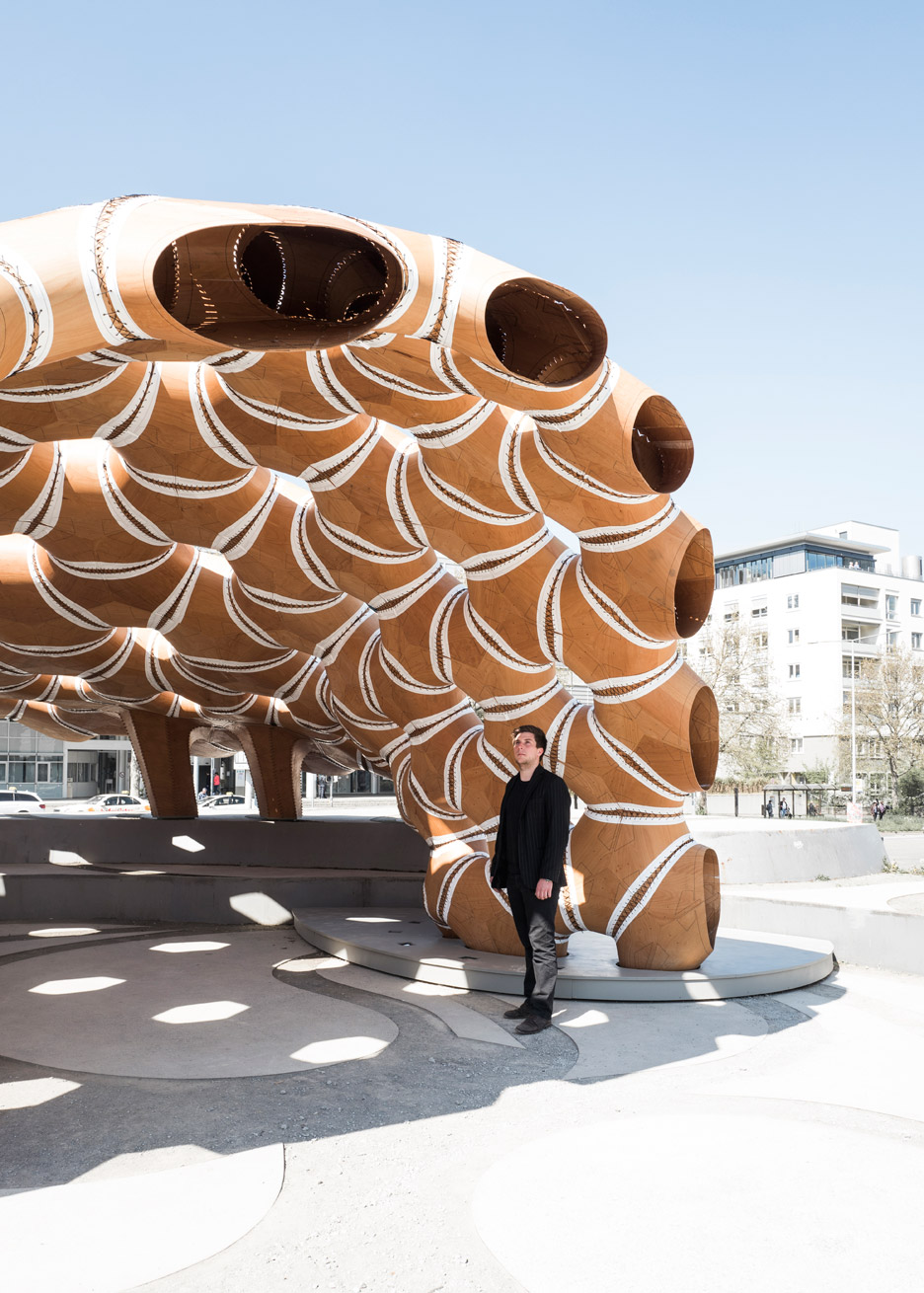
"The pavilion is the first of its kind to employ industrial sewing of wood elements on an architectural scale," said the team.
Architecture and engineering students from the school's architecture and urban planning faculty worked alongside a team of biologists and palaeontologists to develop the ICD/ITKE Research Pavilion 2015/16.
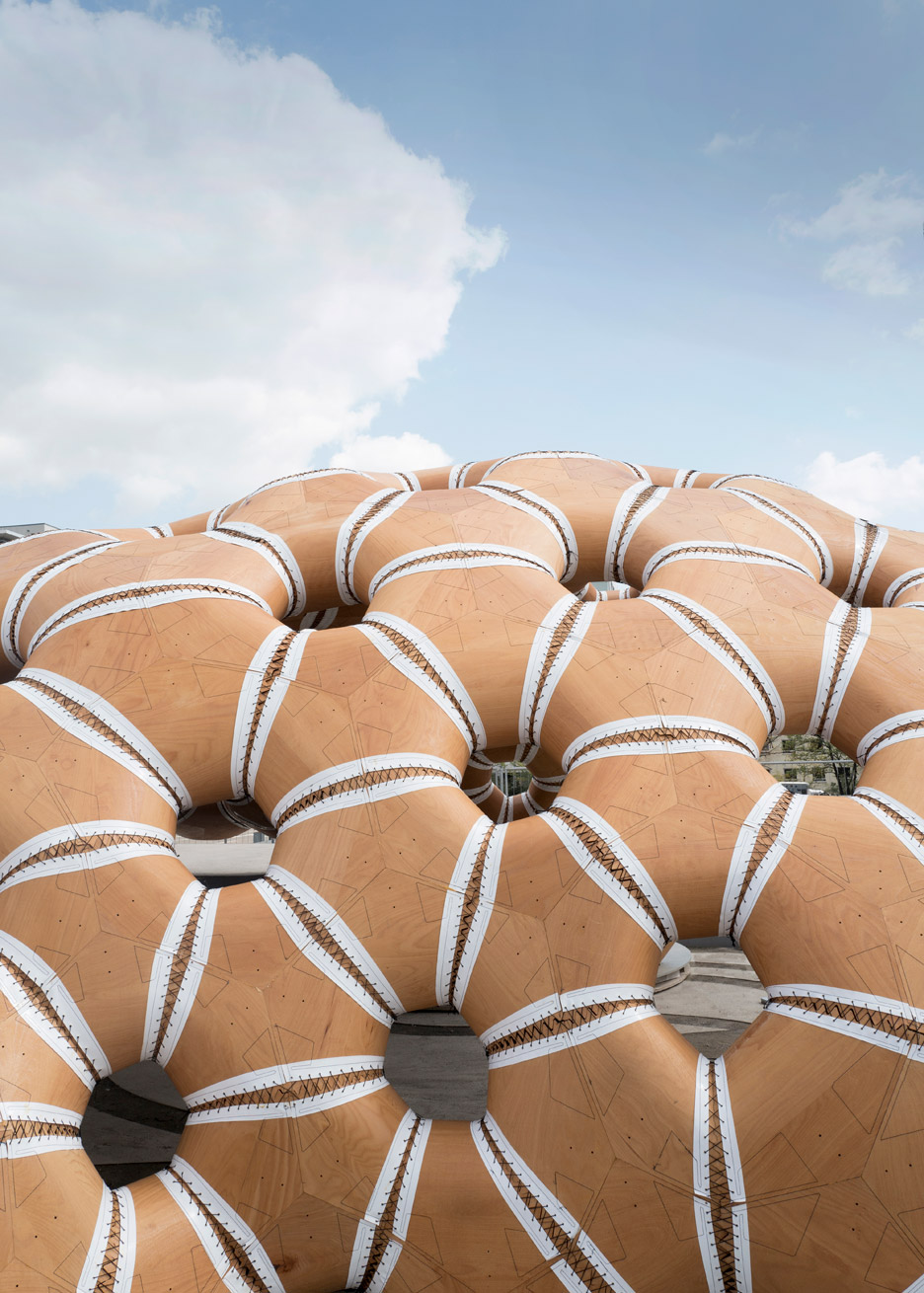
Like previous pavilions, the design is based on biomimetic research into the shell formations of animals.
The project took as its starting point the jointed plate structures found in sand dollars – a type of flat, burrowing sea urchin – and investigated how this naturally occurring structure could be applied to construction.
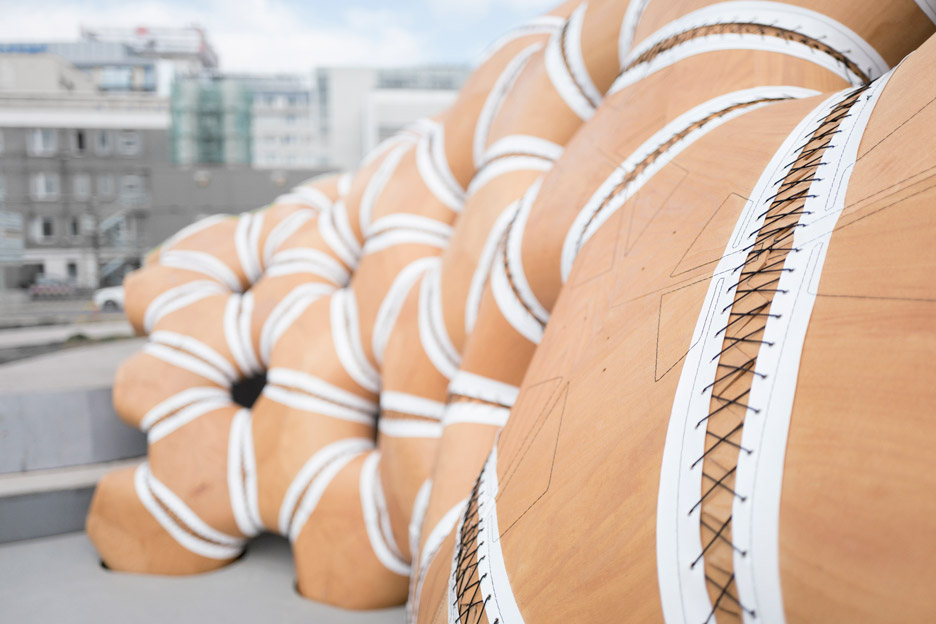
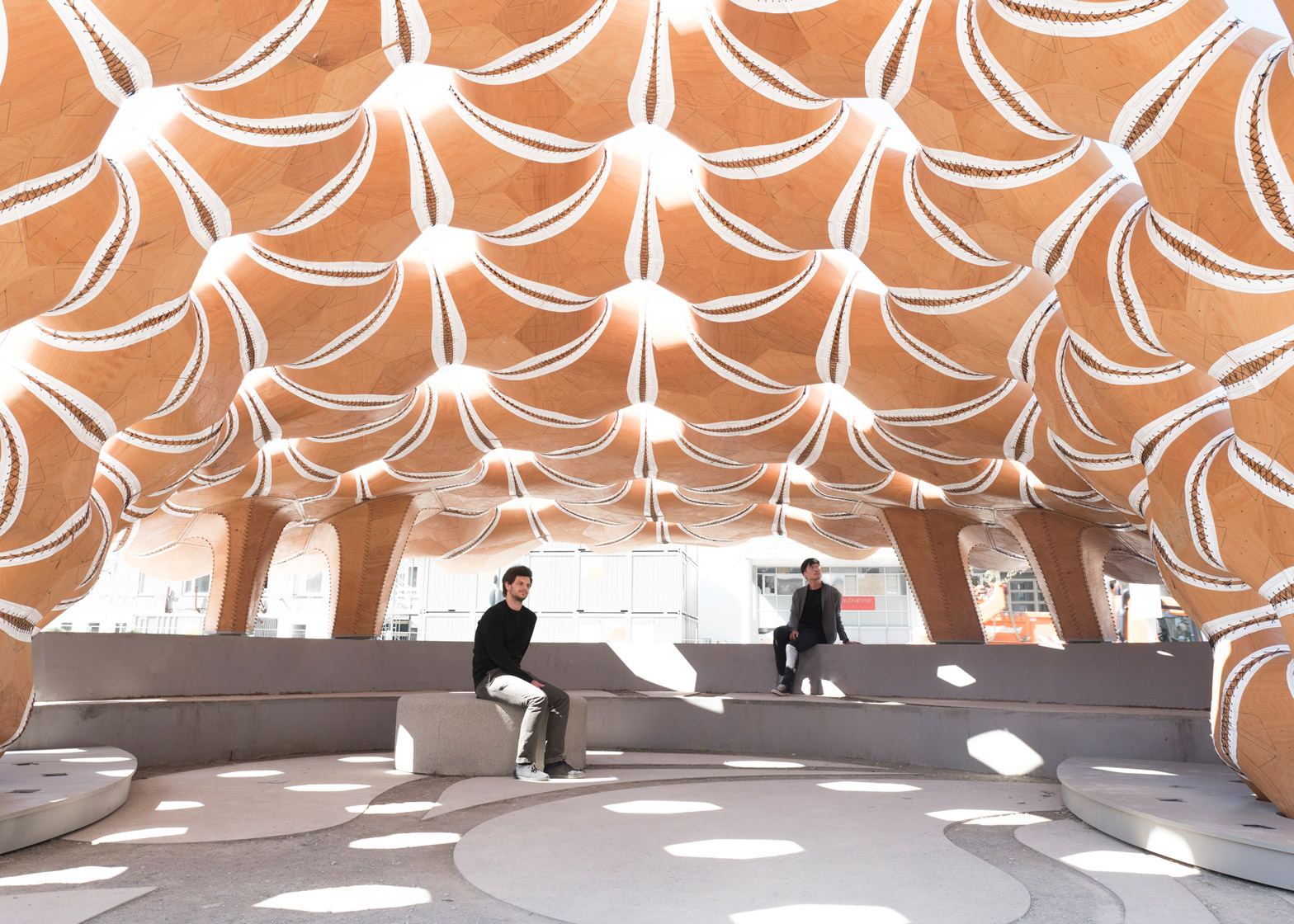
But the team conducted further research with biologists from the University of Tübingen to develop a new fabrication technique for this year's structure.
This involves using a robot to bend sheets of custom-laminated beech plywood to create double-layered segments.
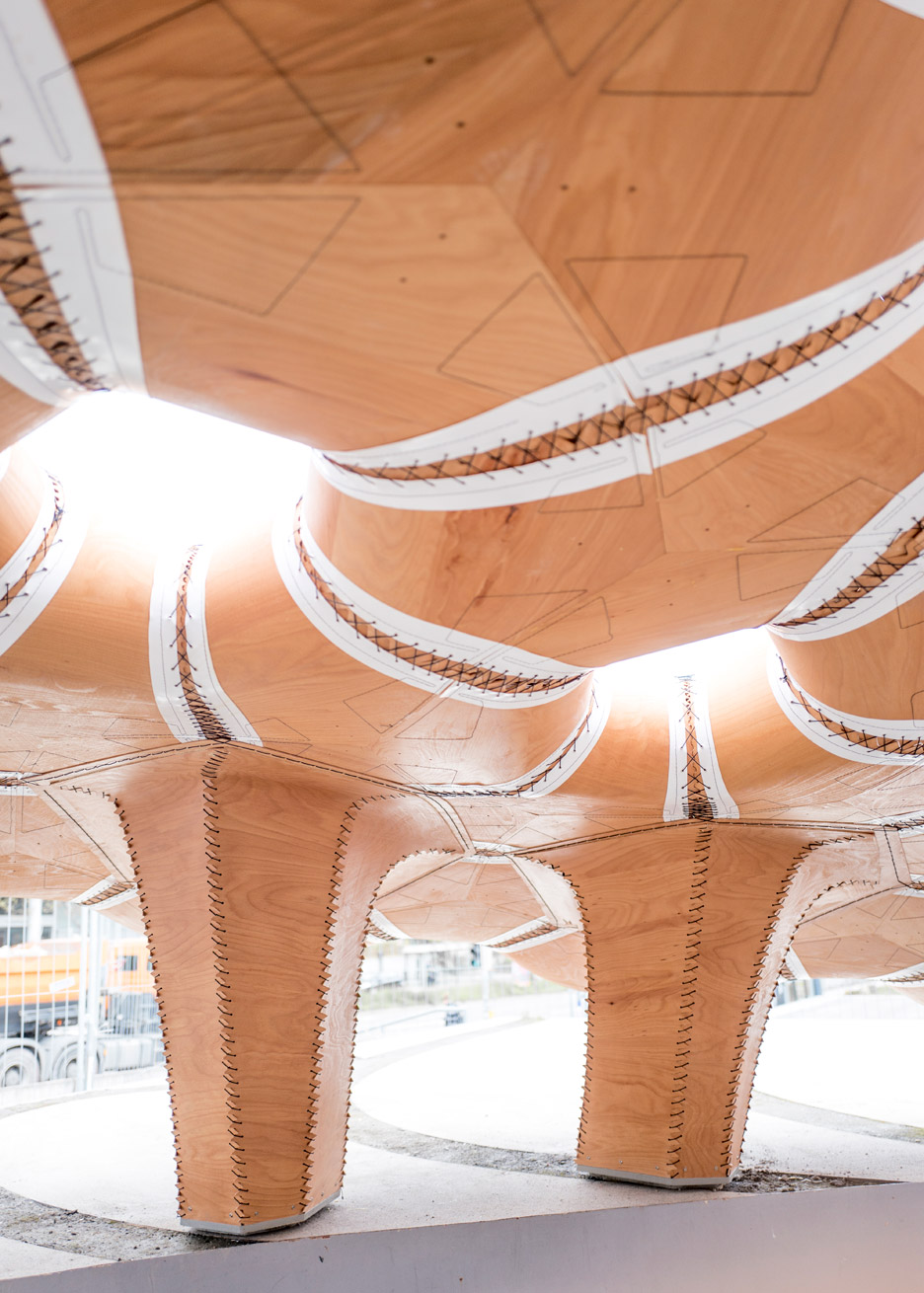
These are then passed through an industrial sewing machine to both lace the pieces together and to prevent the layers of laminated wood from separating. The stitched joints transfer tensile forces between the segments, playing a similar role to the fibrous connections found between the plates of a sea urchin's shell.
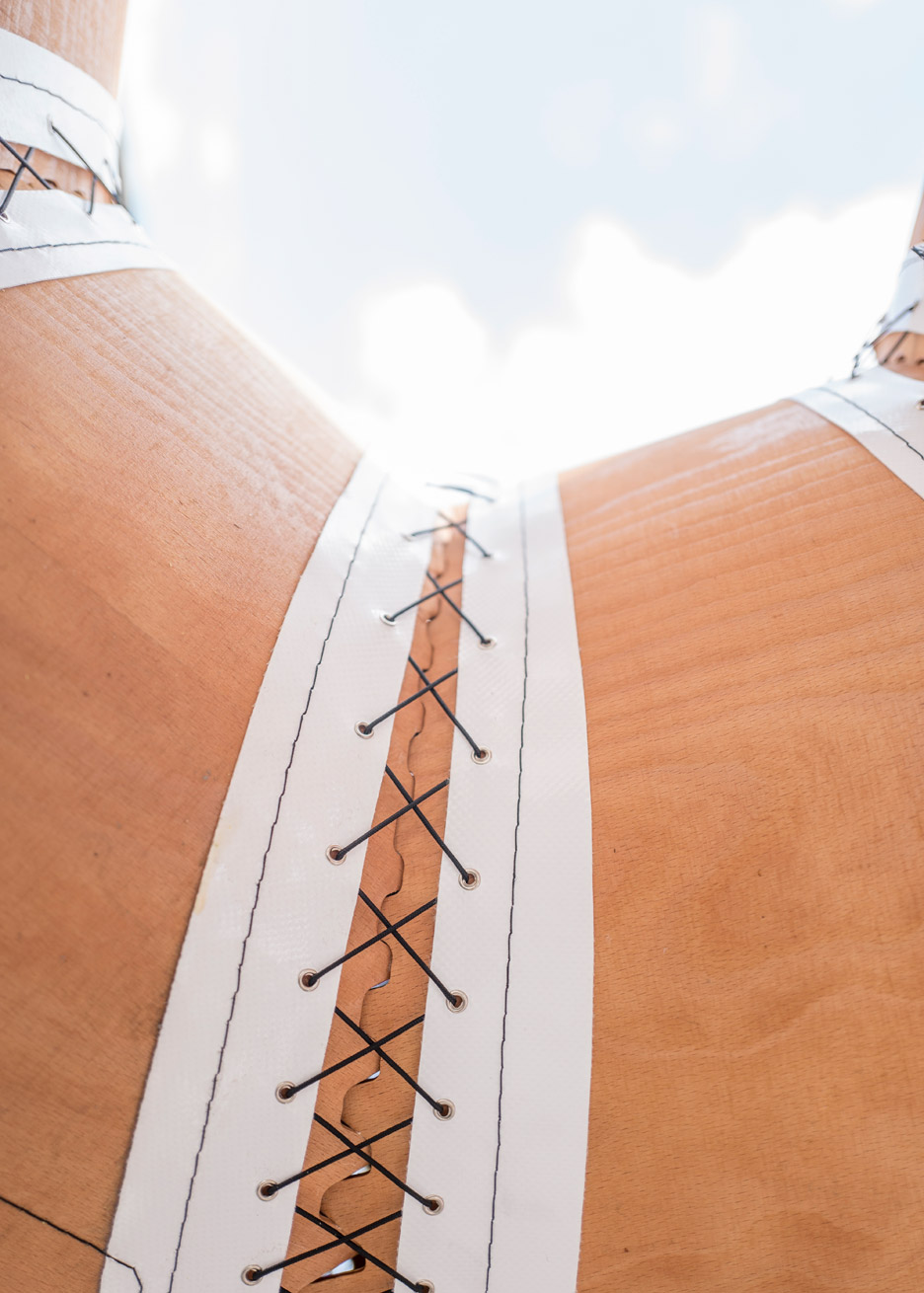
The robot and the sewing machine are both controlled through custom software.
"It was concluded that the performance of these segmented lightweight structures relies not only on the arrangement of its individual calcite plates, but also on the geometric morphology of a double layered system and the differentiation within the material," explained the team.
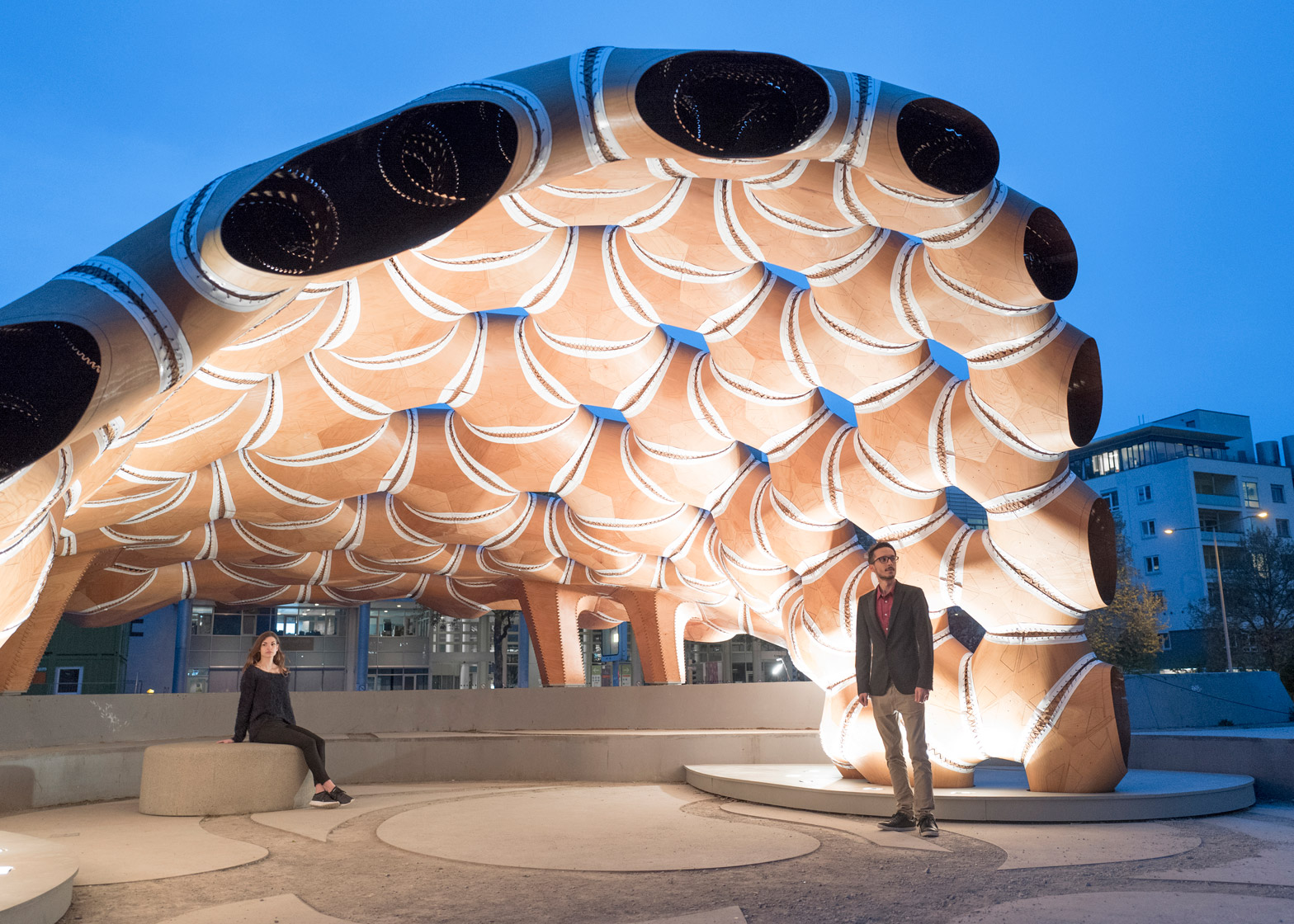
"Most importantly however, the calcite plates of some sea urchin species are connected through fibrous elements in addition to the finger joints, and it can be hypothesised that this multi-material connection plays an important role in maintaining the integrity of the sea urchin's shell during growth and exposure to external forces."
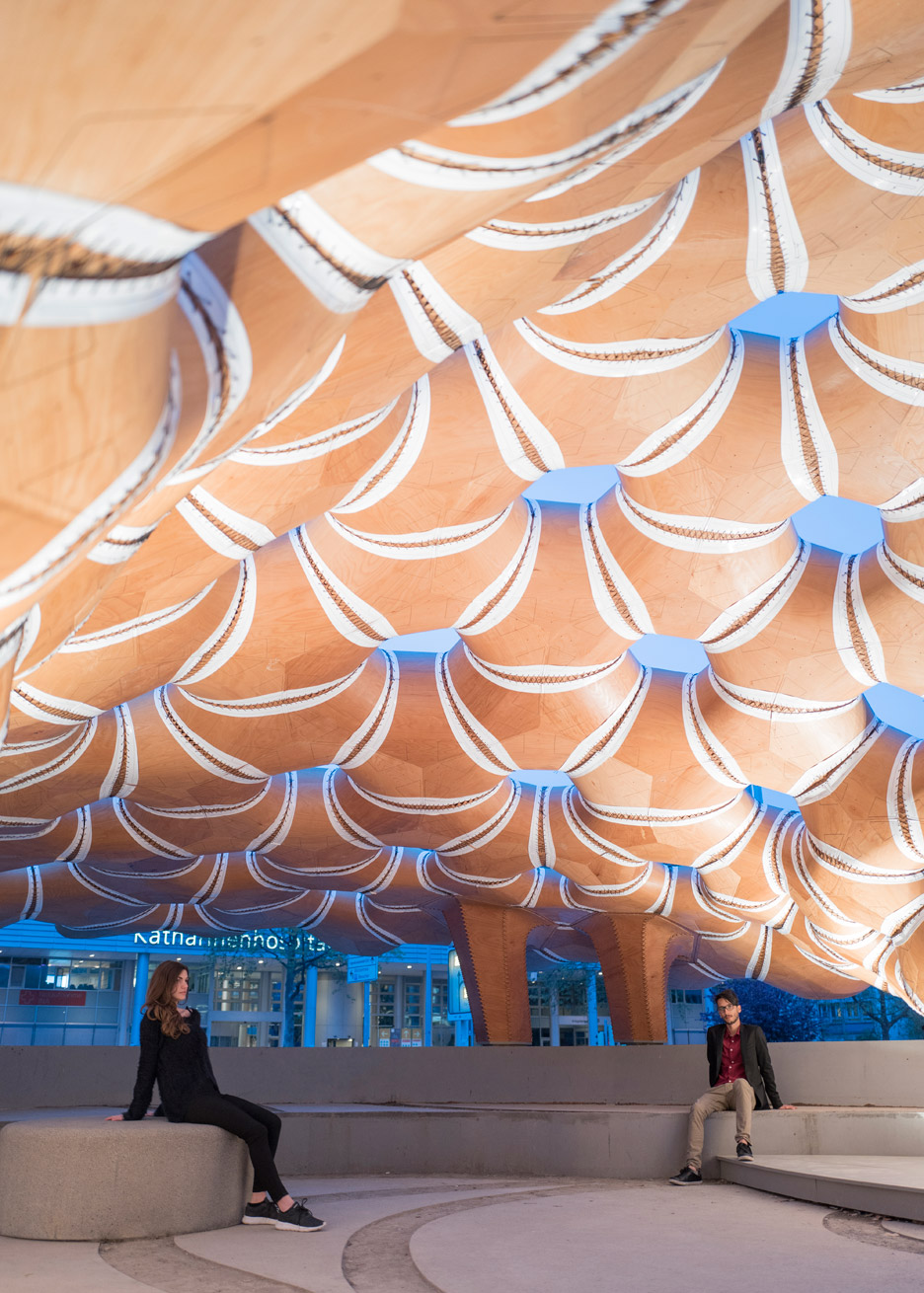
The pavilion comprises 151 wooden elements with varying dimensions, which range between 0.5 and 1.5 metres in diameter. Their scale and from is calculated depending on structural requirements.
The entire structure weighs 780 kilograms and has a span of over nine metres. It arches over a tiered seating area within the university grounds, creating a semi-sheltered space that opens onto a public square.
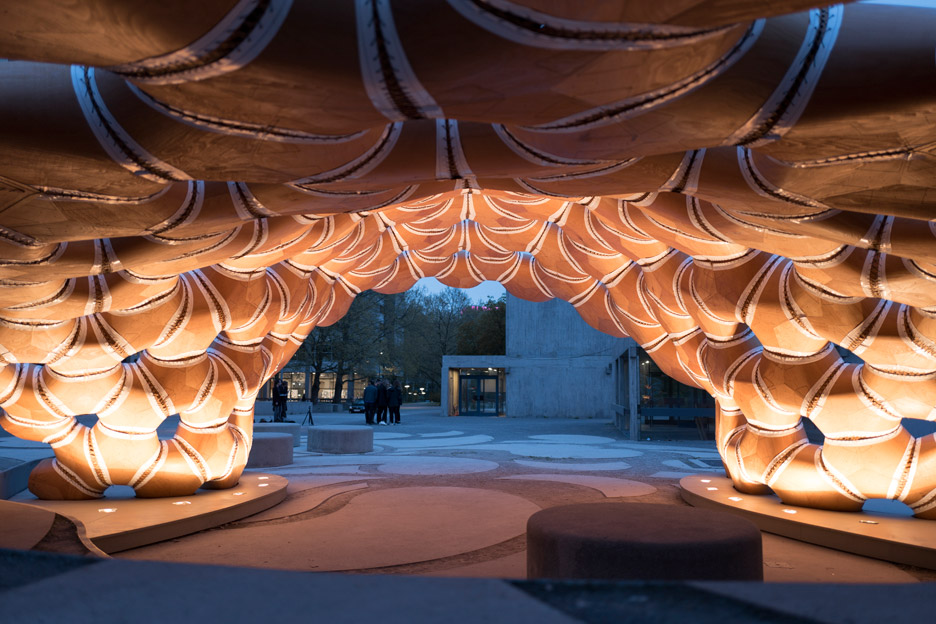
"The pavilion shows how the computational synthesis of biological principles and the complex reciprocities between material, form and robotic fabrication can lead to innovative timber construction methods," said the team.
"This multidisciplinary research approach does not only lead to performative and material efficient lightweight structure, it also explores novel spatial qualities and expands the tectonic possibilities of wood architecture."
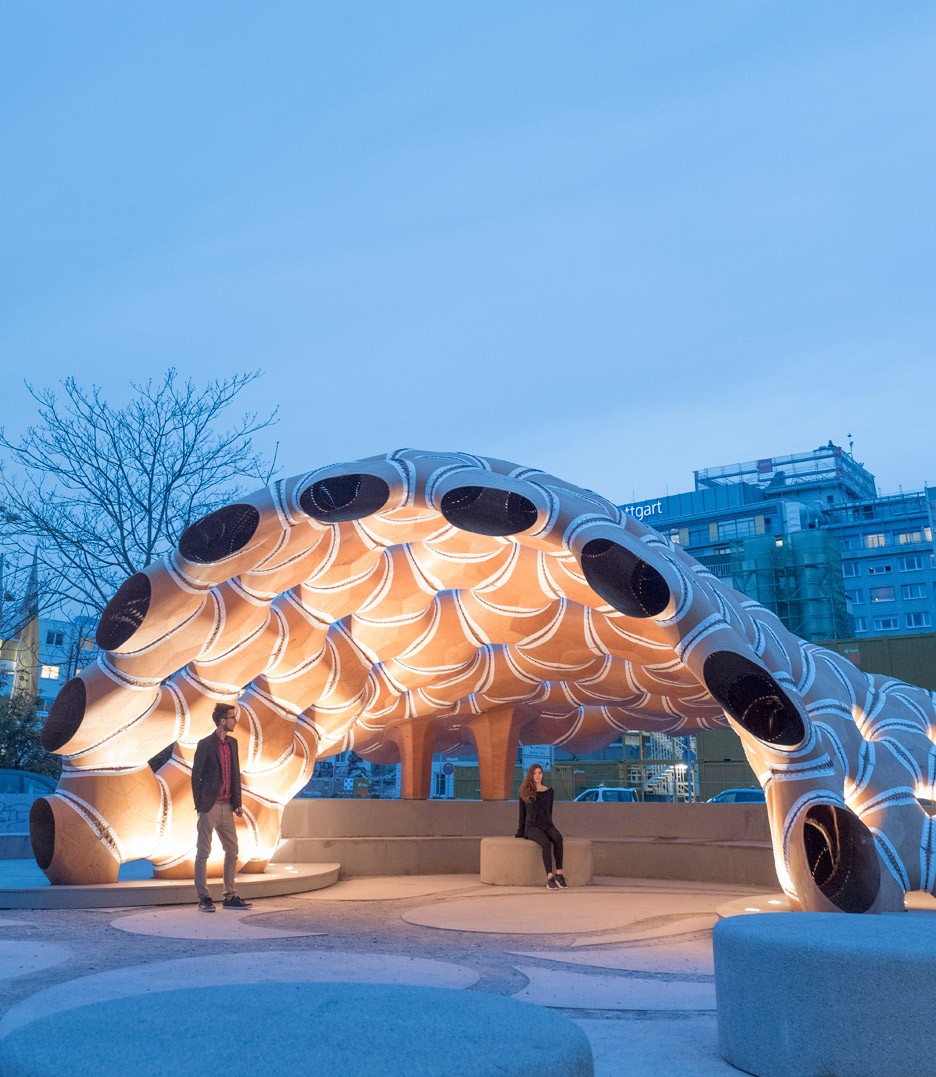
Past research pavilions have also included robotically woven carbon-fibre structures. Achim Menges and Jan Knippers are developing this technique further with architect Moritz Dörstelmann and engineer Thomas Auer for a pavilion at the V&A museum in London, opening later this month.
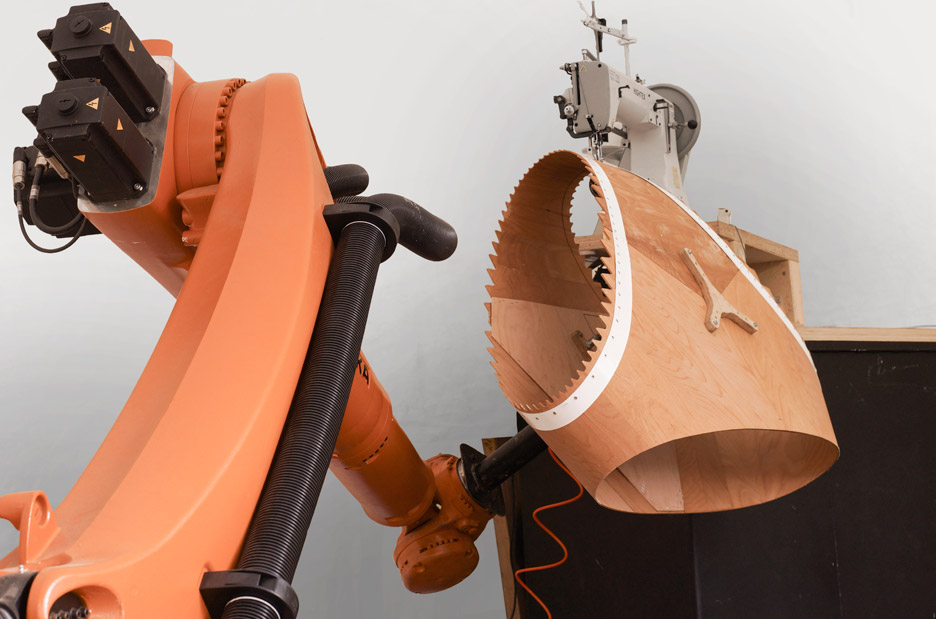
During the exhibition, a robot will construct elements of the pavilion by winding glass and carbon fibres around a metal scaffolding. Its web-like structure has been developed from the group's research into the fibrous structures found in the wings of flying beetles.
Project credits:
ICD Institute for Computational Design: Achim Menges
ITKE Institute of Building Structures and Structural Design: Jan Knippers
Scientific development: Simon Bechert, Oliver David Krieg, Tobias Schwinn, Daniel Sonntag
Concept development, system development, fabrication and construction: Martin Alvarez, Jan Brütting, Sean Campbell, Mariia Chumak, Hojoong Chung, Joshua Few, Eliane Herter, Rebecca Jaroszewski, Ting-Chun Kao, Dongil Kim, Kuan-Ting Lai, Seojoo Lee, Riccardo Manitta, Erik Martinez, Artyom Maxim, Masih Imani Nia, Andres Obregon, Luigi Olivieri, Thu Nguyen Phuoc, Giuseppe Pultrone, Jasmin Sadegh, Jenny Shen, Michael Sveiven, Julian Wengzinek, and Alexander Wolkow, Long Nguyen, Michael Preisack, Lauren Vasey
Collaborators: Department of Evolutionary Biology of Invertebrates (Oliver Betz), Department of Palaeontology of Invertebrates (James Nebelsick), University of Tuebingen
Support: Deutsche Forschungsgemeinschaft (DFG) GETTYLAB, BW-Bank, Edelrid, Frank Brunnet, Forst BW, Groz-Beckert KG Guetermann, Hess & Co, KUKA Roboter, Mehler Texnologies